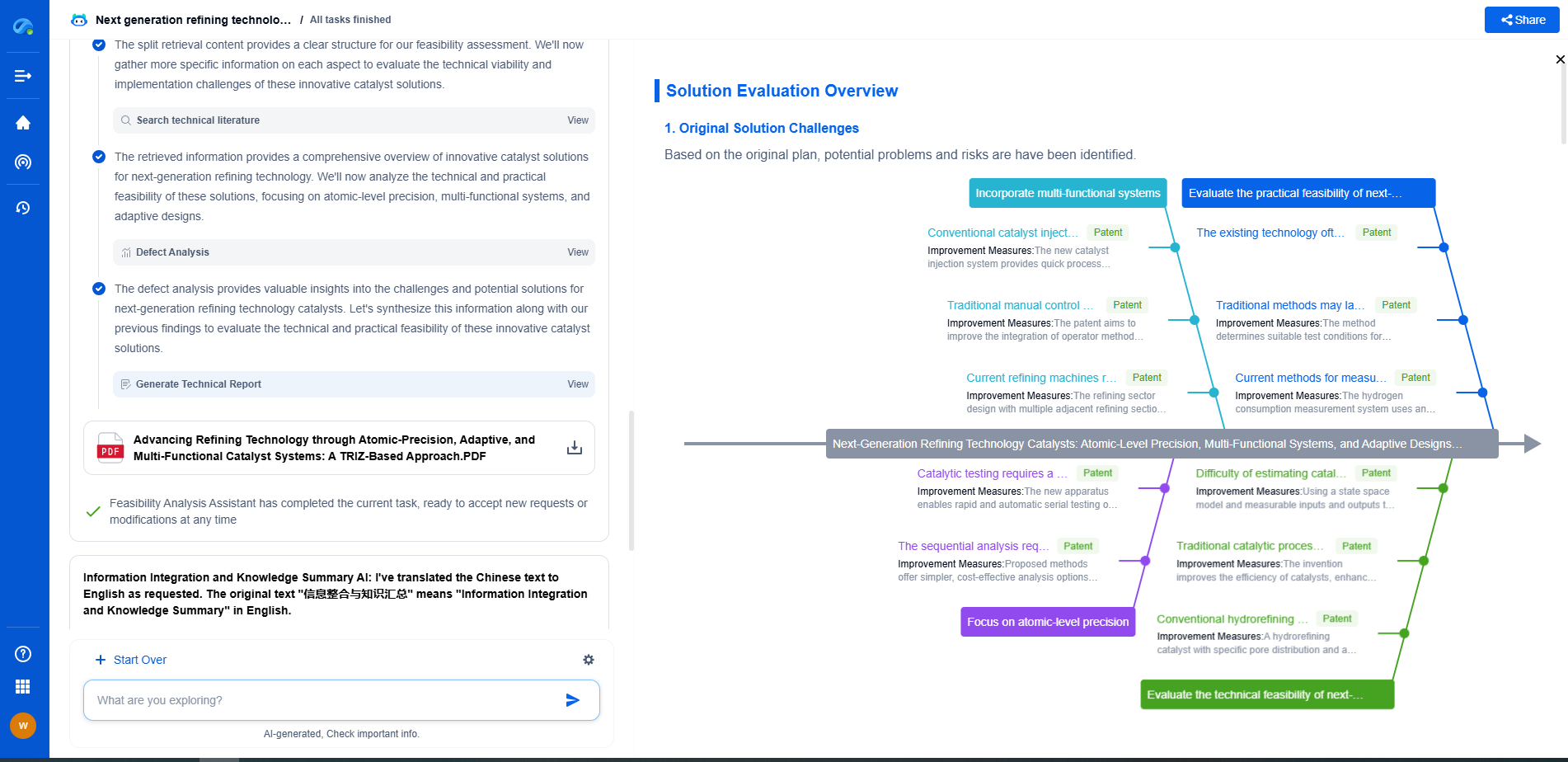2-jaw vs 3-jaw robot grippers: Which is better?
JUN 26, 2025 |
When it comes to automation and robotics, one of the most crucial components is the gripper. Grippers allow robots to interact with objects, making them essential in manufacturing, packaging, and various other industries. Two of the most common types of robot grippers are 2-jaw and 3-jaw grippers. Each comes with its own set of advantages and disadvantages, making the choice between them highly dependent on the specific application. In this blog, we will explore the differences between these two types of grippers, their advantages and limitations, and help you determine which might be better suited for your needs.
Understanding 2-Jaw Grippers
2-jaw grippers, often referred to as parallel grippers, consist of two opposing jaws that move in a straight line towards each other to grasp an object. This design makes them suitable for handling objects with simple geometries, such as flat or cylindrical shapes. The simplicity of 2-jaw grippers often translates into cost-effectiveness and ease of maintenance.
**Advantages of 2-Jaw Grippers:**
1. **Cost-Effective:** Due to their simple design, 2-jaw grippers are generally less expensive to manufacture and maintain.
2. **Simplicity:** Their straightforward mechanism makes them reliable and easy to program for repetitive tasks.
3. **Speed:** The simpler motion path allows for quick operation, making them suitable for high-speed applications.
**Limitations of 2-Jaw Grippers:**
1. **Limited Versatility:** They are not ideal for handling irregularly shaped or fragile items due to their basic gripping mechanism.
2. **Reduced Grip Stability:** With only two points of contact, 2-jaw grippers may struggle to firmly grasp certain objects, especially if precision is required.
Exploring 3-Jaw Grippers
3-jaw grippers, also known as centric grippers, feature three jaws that move radially towards the center, allowing for a more secure and balanced hold on the object. This design is particularly advantageous for handling round or symmetrical objects, providing superior grip stability.
**Advantages of 3-Jaw Grippers:**
1. **Enhanced Grip Stability:** The three-point contact offers better grip stability and precision, making them ideal for delicate or intricate tasks.
2. **Versatility:** Capable of handling a wider range of shapes and sizes, 3-jaw grippers are more adaptable to diverse applications.
3. **Improved Load Distribution:** The radial symmetry ensures even load distribution, reducing the risk of damage to both the gripper and the object.
**Limitations of 3-Jaw Grippers:**
1. **Cost:** The more complex design often leads to higher costs compared to 2-jaw grippers.
2. **Speed:** The additional mechanical components can result in slower operational speeds.
3. **Complexity:** Programming and maintenance can be more challenging due to the intricate mechanism.
Choosing the Right Gripper for Your Application
When deciding between a 2-jaw or 3-jaw gripper, it’s essential to consider the specific requirements of your application. If your tasks primarily involve picking and placing simple, uniform objects at high speeds, a 2-jaw gripper might be the most efficient choice. However, if your application demands handling a variety of shapes and requires precise grip control, a 3-jaw gripper could offer the reliability and adaptability you need.
Factors to Consider:
1. **Object Geometry:** Assess the shapes and sizes of the objects you will be handling. Round or irregularly shaped items often benefit from a 3-jaw gripper.
2. **Speed Requirements:** Evaluate the speed at which tasks need to be completed. High-speed operations may favor the simplicity of 2-jaw grippers.
3. **Budget Constraints:** Balance the cost against the necessary functionality. While 3-jaw grippers may offer more features, their cost and complexity could outweigh the benefits for certain applications.
Conclusion
Ultimately, the choice between 2-jaw and 3-jaw robot grippers depends on the demands of your specific application. By understanding the strengths and weaknesses of each type, you can make an informed decision that optimizes performance, efficiency, and cost-effectiveness in your robotic operations. Whether prioritizing speed, versatility, or precision, selecting the right gripper is essential for maximizing the effectiveness of your automation processes.
Ready to Redefine Your Robotics R&D Workflow?
Whether you're designing next-generation robotic arms, optimizing manipulator kinematics, or mining patent data for innovation insights, Patsnap Eureka, our cutting-edge AI assistant, is built for R&D and IP professionals in high-tech industries, is built to accelerate every step of your journey.
No more getting buried in thousands of documents or wasting time on repetitive technical analysis. Our AI Agent helps R&D and IP teams in high-tech enterprises save hundreds of hours, reduce risk of oversight, and move from concept to prototype faster than ever before.
👉 Experience how AI can revolutionize your robotics innovation cycle. Explore Patsnap Eureka today and see the difference.
- R&D
- Intellectual Property
- Life Sciences
- Materials
- Tech Scout
- Unparalleled Data Quality
- Higher Quality Content
- 60% Fewer Hallucinations
Browse by: Latest US Patents, China's latest patents, Technical Efficacy Thesaurus, Application Domain, Technology Topic, Popular Technical Reports.
© 2025 PatSnap. All rights reserved.Legal|Privacy policy|Modern Slavery Act Transparency Statement|Sitemap|About US| Contact US: help@patsnap.com

